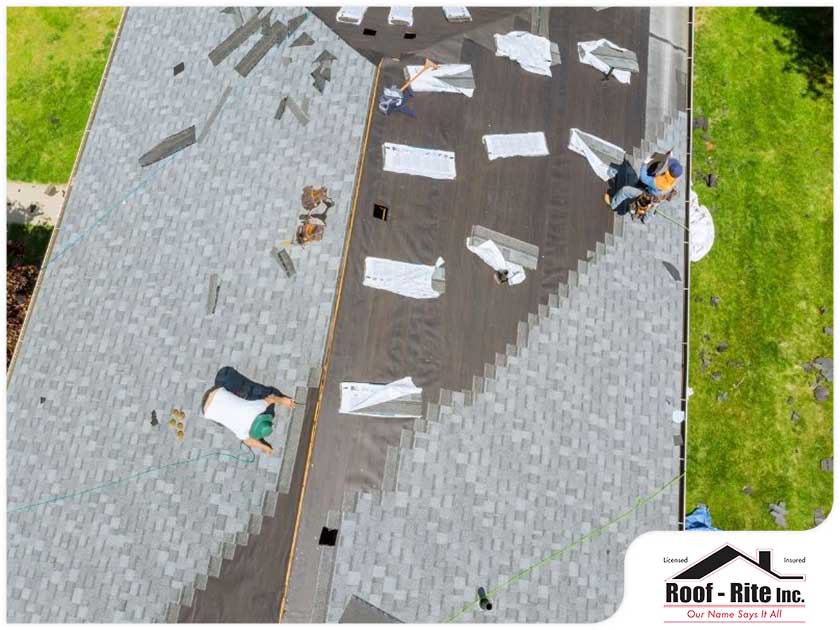When you own a home, the roof is one of the longest-lasting features of the building that holds up well over time. There will still be a time when the roof starts to deteriorate and needs to be replaced. When you’re planning for an upcoming roof installation, there are a few things to expect while working with a qualified roofer.

Roof Inspection
Before your new roof is installed, a roofer will want to perform a thorough inspection of the structure to determine its overall condition and shape. This will help them confirm it’s time to reroof the home and can determine if any of the materials are still in good shape to ensure they can be left behind. The roof sheathing may need to be replaced before moving forward with the roof installation.
Removing Your Old Roof
One of the first steps of this process is removing the old roof and tearing off all the old and worn materials that are in place. New layers should never be added to the old structure because this can lead to damage to the overall roof. All of the old layers need to be removed and rebuilt, which is a complex and intricate process that needs to be performed by an experienced professional. Protective gear and equipment
Plan for Rainfall
Rainfall can occur at any time of the year, which makes it necessary to plan for moisture to be present. The roof needs to be built to avoid any damage that can occur with the use of a water barrier that is put into place by your roofer. The barrier will be put around the edges of the roof and nailed down to prevent it from blowing away in the middle of a storm. This will prevent any leaks from forming as the roof is built to prevent water damage to the home.
Use a Drip Edge
Building a new roof also involves adding a drip edge to prevent further water damage. This needs to be installed on the bottom portion of the roof to prevent any moisture from having contact with the siding of your house. You’ll find this works well for preventing leaks.
Adding a Roof Underlayment
The roof underlayment is one of the most important parts of the new roof, which has different textures and levels of density. The roofing professional will explain what level of thickness they recommend and the differences between paper and synthetic underlayment. This material will be secured with the use of cap nails, which shouldn’t have any contact with the drip edge.
Roofing Shingles
The final step of reroofing the home is adding new shingles to the roof deck. This can be performed after the roofer confirms the underlayment is dry and has settled correctly. The vents and roofing pipes also need to be painted to ensure they blend in well with the roof and don’t stick out, which can affect your home’s curb appeal. After this is completed, the roofer will clean up the site and will perform a final inspection.
By understanding what goes into a roof installation, it can allow you to be more prepared for the process and avoid any surprises. After using the services of a professional roofer, you can look forward to having a sturdy and durable roof that lasts for many decades.
